Mini Band Home Exercises
1/23/2024
In the hustle and bustle of our daily lives, finding time for daily exercise can be a daunting task. However, maintaining a healthy lifestyle doesn't have to be complicated. With a few simple at-home exercises, you can prioritize your health without the need for a gym membership or fancy equipment. Let's explore some effective workouts designed for those with limited time and resources.
Set Yourself Up For Success
- Select the Right Mini Band: Choose a mini band with appropriate resistance. The resistance level should be challenging but still allow you to maintain proper form.
- Stretch before and after any physical activity. Stretching is important for several reasons such as increased range of motion, better blood flow to the muscles, injury prevention, reduced muscle tension and more! It's essential to note that the type of stretching matters. Dynamic stretching (e.g., cat/camels) is often recommended before a workout, as it involves controlled movements that mimic the activity you're about to do. Static stretching (holding a stretch for a prolonged period) is typically more suitable for post-workout cool-downs, as it helps relax the muscles.
- Set up your stance. Position your feet firmly on the ground. Maintain a slight bend in your knees and keep your back straight throughout the exercise. Your core should stay engaged through each exercise. You can do this by pulling your belly button in towards your spine and focusing on your breath throughout each movement.
- Find your breath. Inhale deeply and slowly through your nose. Focus on letting the air fill your abdomen, allowing it to expand. Your chest should move very little during this phase. Then, exhale slowly and completely through your mouth. Feel your abdomen contract as you release the air. Try to make your exhalation longer than your inhalation.
Tip: Be mindful of your breath. Focus on the sensation of air flowing in and out. If you notice your chest rising and falling significantly, make a conscious effort to redirect the breath into your abdomen.

Mini Band Exercises
Tricep Pull Down
- Attach one end of the mini band to your opposite hand. Rest that hand on an anchor point such as your shoulder or chest.
- Hold the other end of the mini band with your opposite hand, ensuring a secure grip.
- Position yourself in a good posture. Your focus arm holds the mini band with a 90-degree bend in the elbow.
- Keep your elbow close to your side and engage your core for stability.
- Initiate the movement by straightening your arm and pulling the mini band downward toward the floor. Your elbow has a slight bend at the extension point.
- Focus on using your triceps to perform the movement, keeping the rest of your body stable.
- Fully pull your arm to the 90-degree, back at the starting position, controlling the resistance of the mini band.
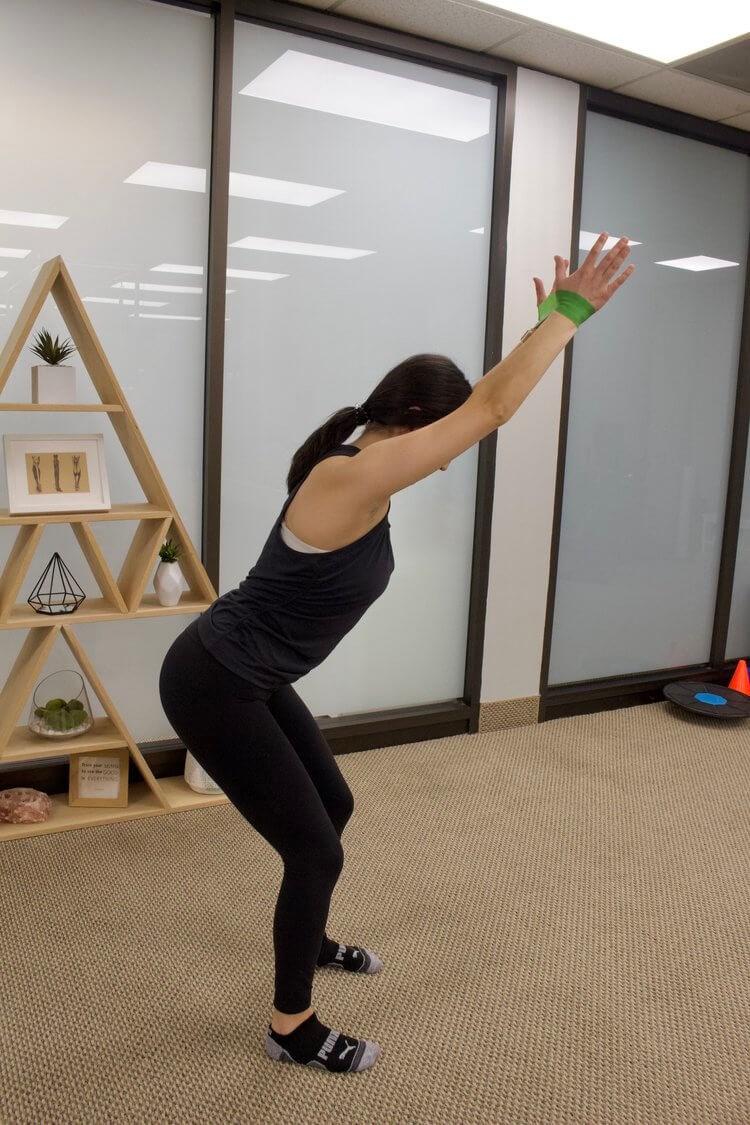
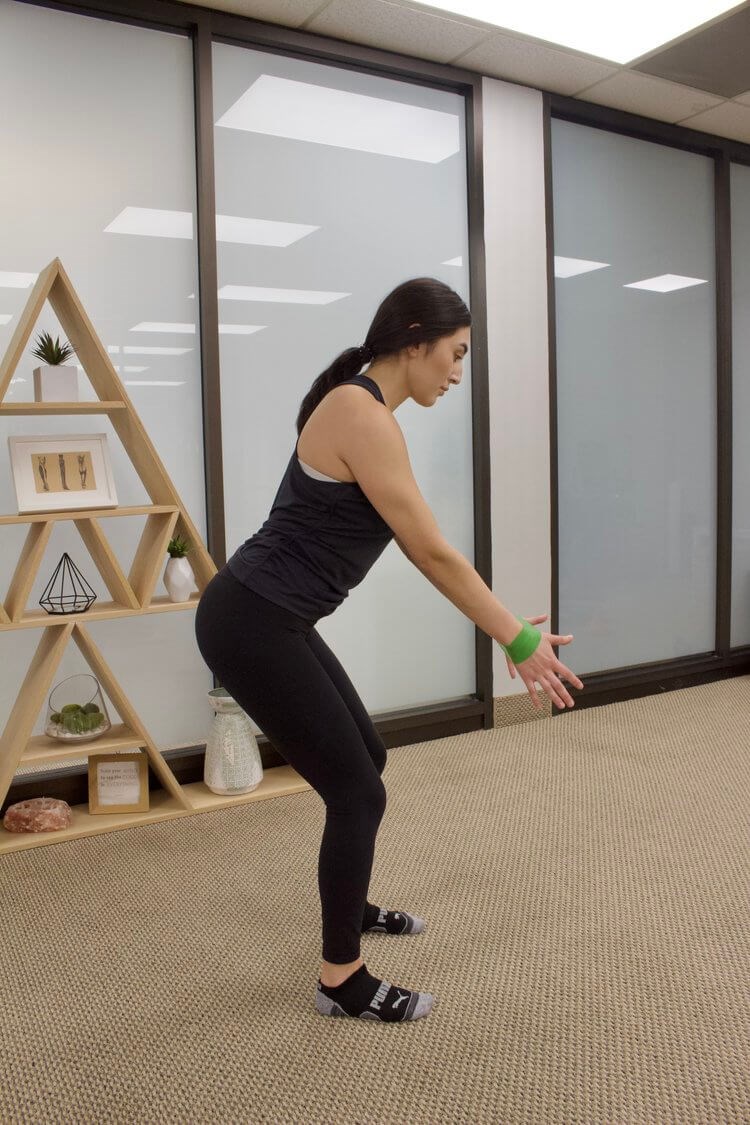
Lat Pull Down
- Wrap the ends of the band around both hands or wrists, ensuring a comfortable grip.
- Hinge at the hips slightly with a bend in your knees. Your arms go up overhead, be mindful to keep your shoulders rolled back and core engaged. Your gaze is straightforward.
- Initiate the movement by pulling your arms down, and driving them towards your hips. Create tension in the band by keeping your hands separated.
- Raise the hands back to the starting position with control.
- Focus on using your back muscles/your lats to perform the movement, rather than relying solely on your arms.
- Move through this motion nice and slow to full engage the muscle.

Concentrated Bicep Curl
- Kneel on the floor with one leg forward and one leg back. Place one end of a mini resistance band under you the arch of your foot and the other hand around your palm.
- Press your elbow into your inner thigh and keep your core engaged to maintain stability. You can hinge forward slightly to keep your spine elongated and protected.
- Extend your arm fully, letting your palm point down toward the floor.
- Keeping your upper arm stationary, exhale and curl your palm towards your shoulder.
- Focus on squeezing your bicep at the top of the movement.
- Inhale as you lower your palm back down with control.
- Throughout the entire movement, be mindful of the resistance provided by the mini band. Avoid letting momentum take control.
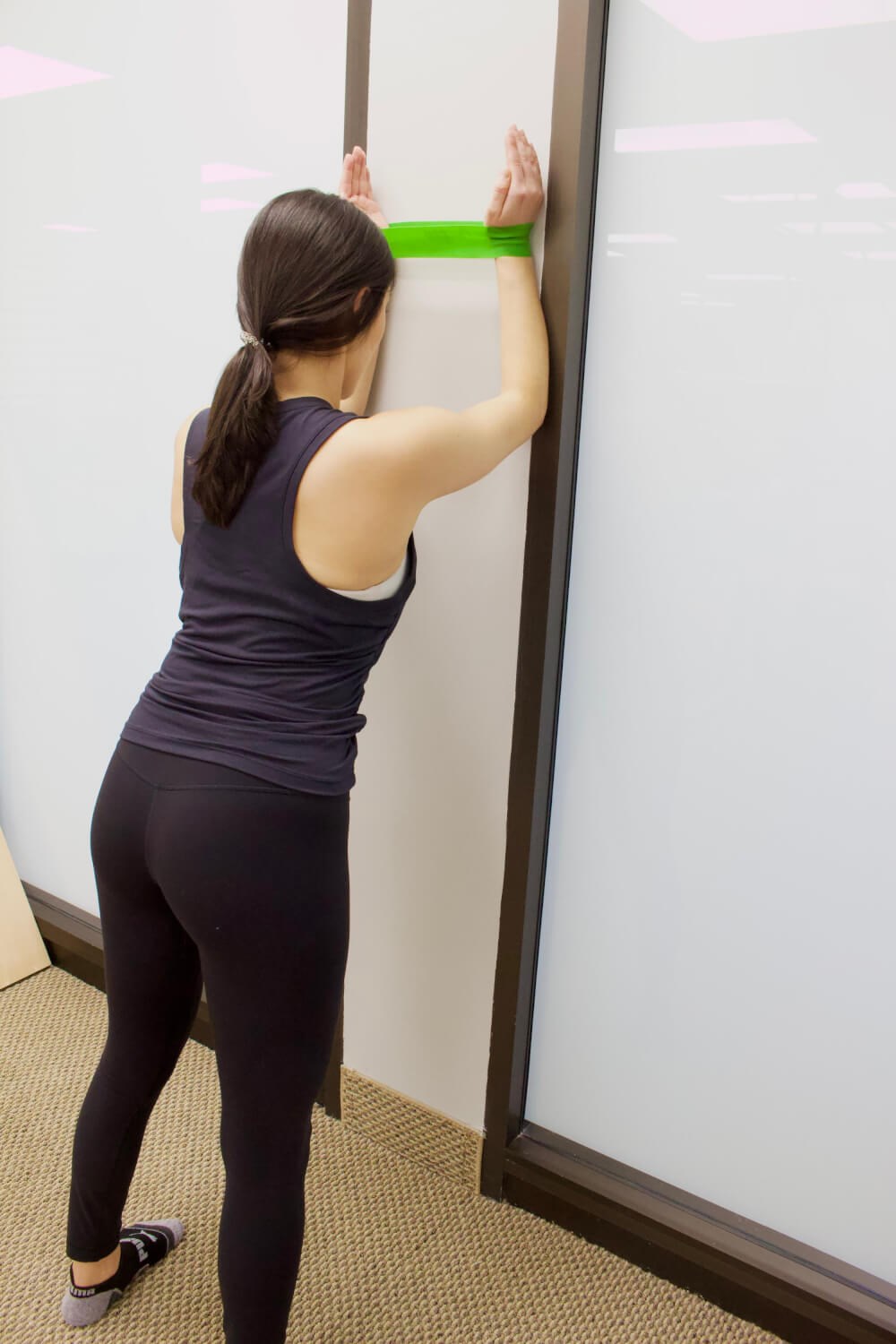
Wall Walks
- Stand facing a wall with your feet hip-width apart. Place a resistance band around your wrists.
- Your forearms are on the wall, parallel to each other. Your elbows should be directly under your shoulders.
- Walk your feet back until your body is in a diagonal position. Keep your core engaged.
- Slowly start walking your hands up the wall by moving your forearms upward.
- Continue walking until your arms are extended, and your body is in a more upright position. Keep the tension on the resistance band throughout the movement.
- Reverse the movement by walking your hands back down the wall to return to the starting position.
- The mini banded wall walk is effective for building shoulder stability, core strength, and improving overall upper body endurance. The resistance band adds an extra challenge by engaging the muscles in the arms and shoulders throughout the movement.
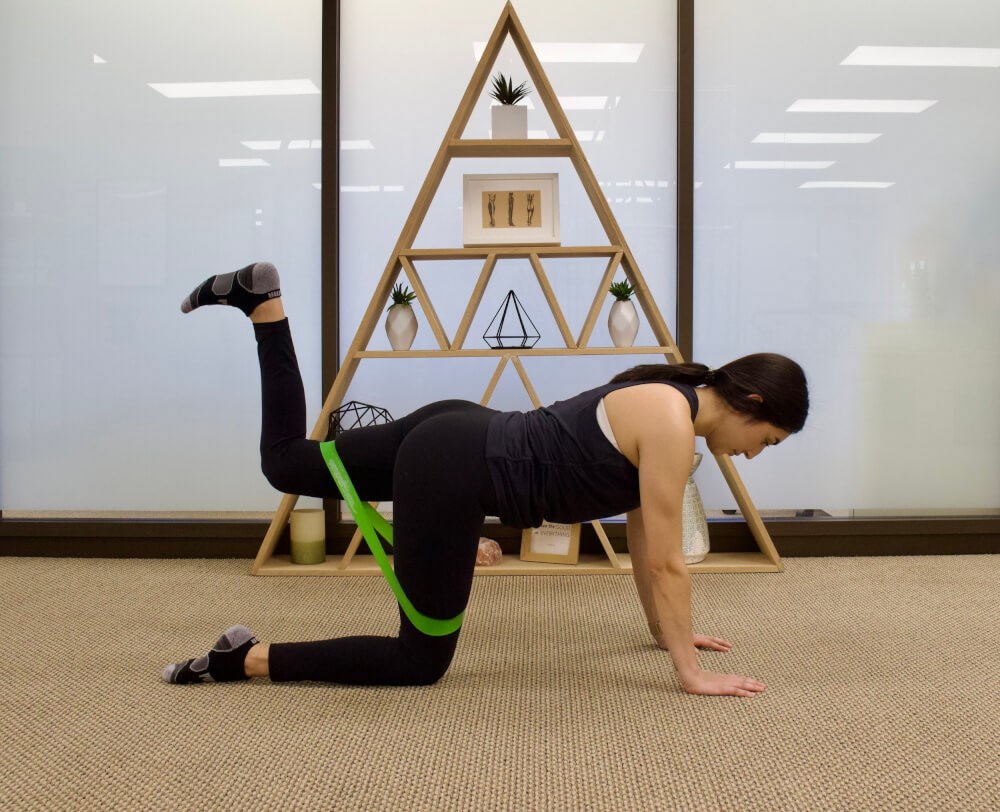
Donkey Kick
- Place a band just above your knees. Begin on your hands and knees in a tabletop position. Ensure that your wrists are directly under your shoulders and your knees are under your hips.
- Your core is pulled in towards your spine, and your back is elongated. Avoid letting the lower back arch by keeping the core engaged.
- Keeping the knee bent, kick the raised leg straight back and upward, engaging your glutes. Focus on lifting the heel toward the ceiling while maintaining a straight line from your head to your lifted leg. Your toes stay flexed.
- At the top of the movement, hold for a moment and squeeze your glutes to maximize the contraction in the muscles.
- Slowly lower the leg back to the starting position without touching the ground. This controlled movement helps engage the muscles throughout the entire range of motion.
- It's important to perform the exercise with controlled movements, focusing on the mind-muscle connection to ensure proper engagement of the glutes.
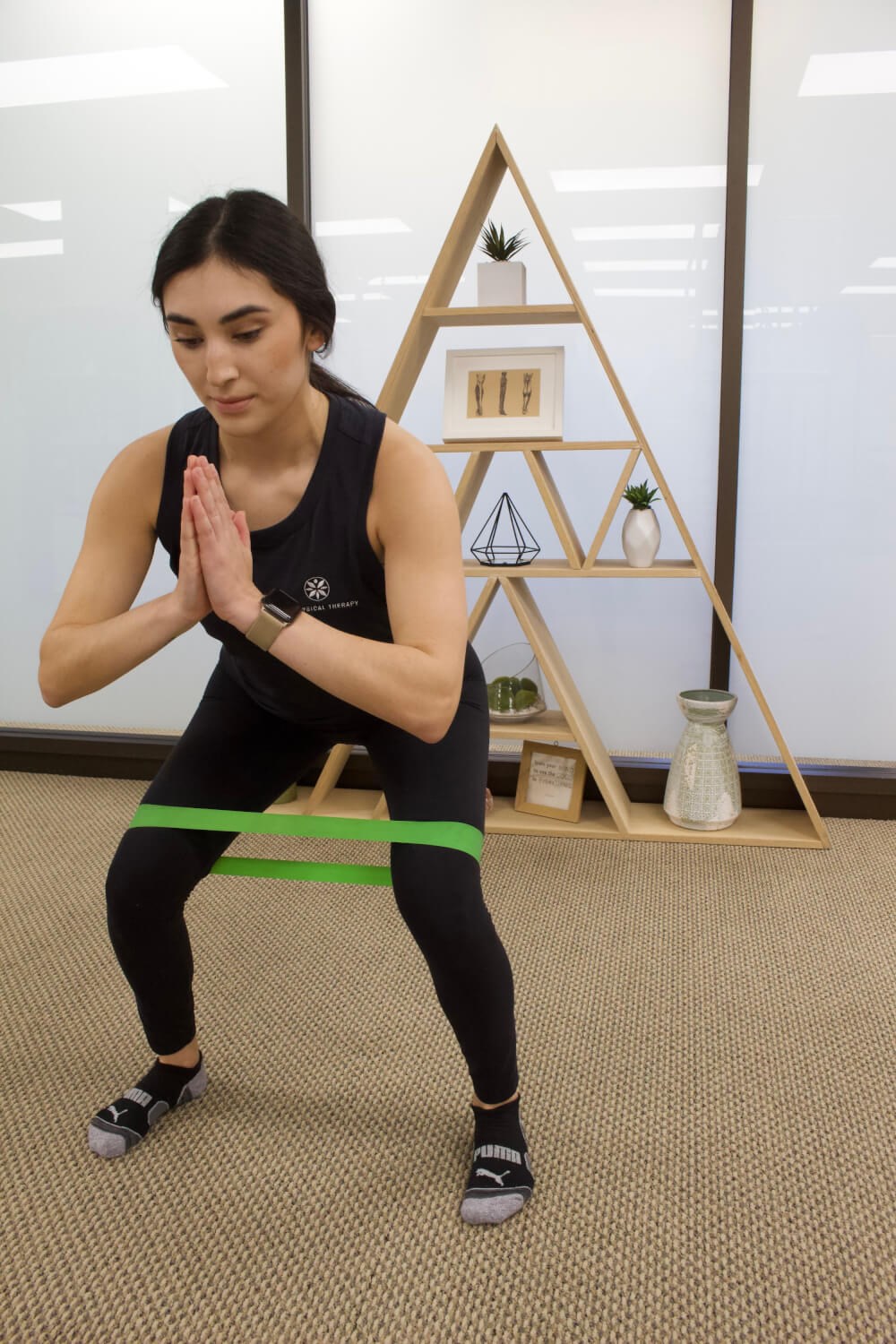
Squat
- Position the mini band around your thighs, just above your knees. Make sure it's snug but not too tight.
- Stand with your feet hip-width apart. Your toes should be slightly turned out.
- Keep your chest up, shoulders back, and engage your core for stability.
- Begin the squat by pushing your hips back and bending your knees. Imagine sitting back into a chair.
- Ensure that your knees are aligned with your toes as you lower your body. The mini band will provide resistance, activating your hip muscles.
- Lower your body down into a squat position, keeping your back straight and chest up. Aim to go as low as your flexibility allows.
- As you reach the bottom of the squat, push through your heels to return to the starting position. Squeeze your glutes at the top.
- Inhale as you lower into the squat and exhale as you push back up.
- Throughout the movement, focus on maintaining tension on the mini band. This engages your hip abductors and external rotators, enhancing the workout.
Remember to start with a light resistance band and gradually increase the difficulty as you become more comfortable with the exercise. It's essential to prioritize proper form over heavy resistance to prevent injury and ensure effective muscle engagement. If you have any existing medical conditions or concerns, consult with one of our Physical Therapists before starting a new exercise routine.